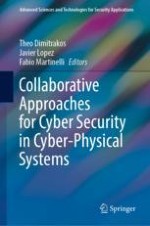2023 | OriginalPaper | Chapter
POM: A Trust-Based AHP-Like Methodology to Solve Conflict Requirements for the IoT
Authors : Davide Ferraris, Carmen Fernandez-Gago, Javier Lopez
Published in: Collaborative Approaches for Cyber Security in Cyber-Physical Systems
Publisher: Springer International Publishing
Activate our intelligent search to find suitable subject content or patents.
Select sections of text to find matching patents with Artificial Intelligence. powered by
Select sections of text to find additional relevant content using AI-assisted search. powered by
